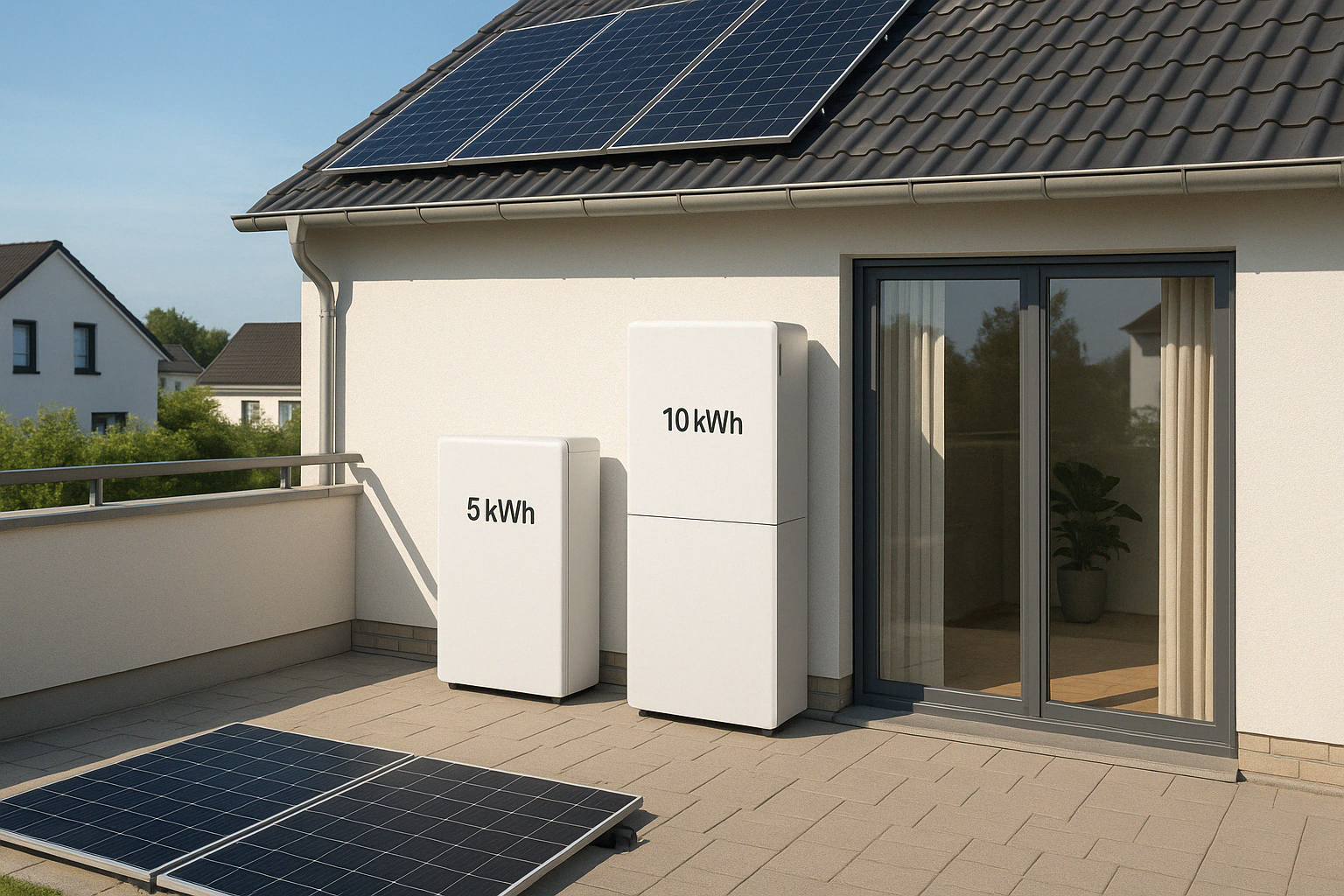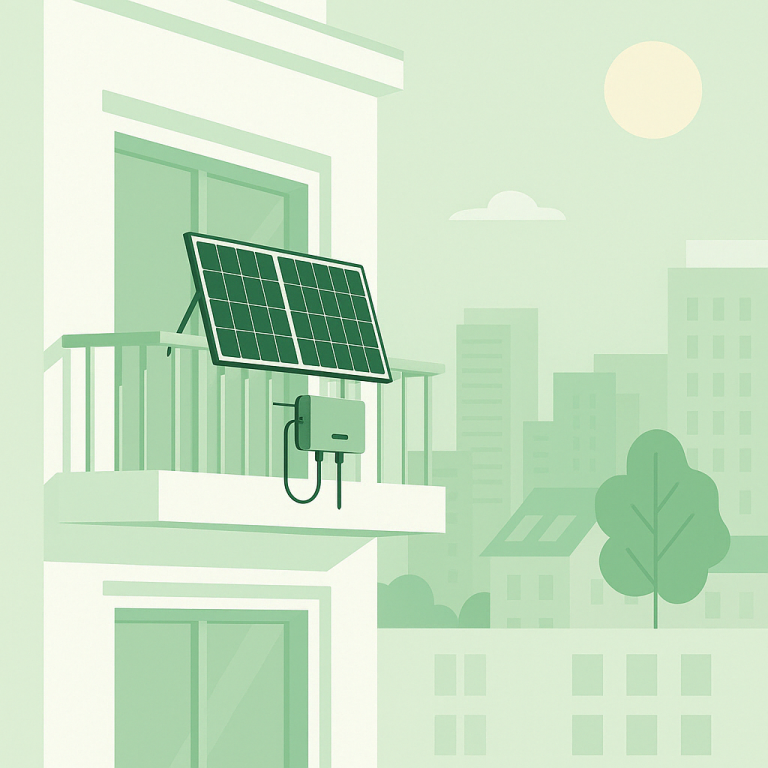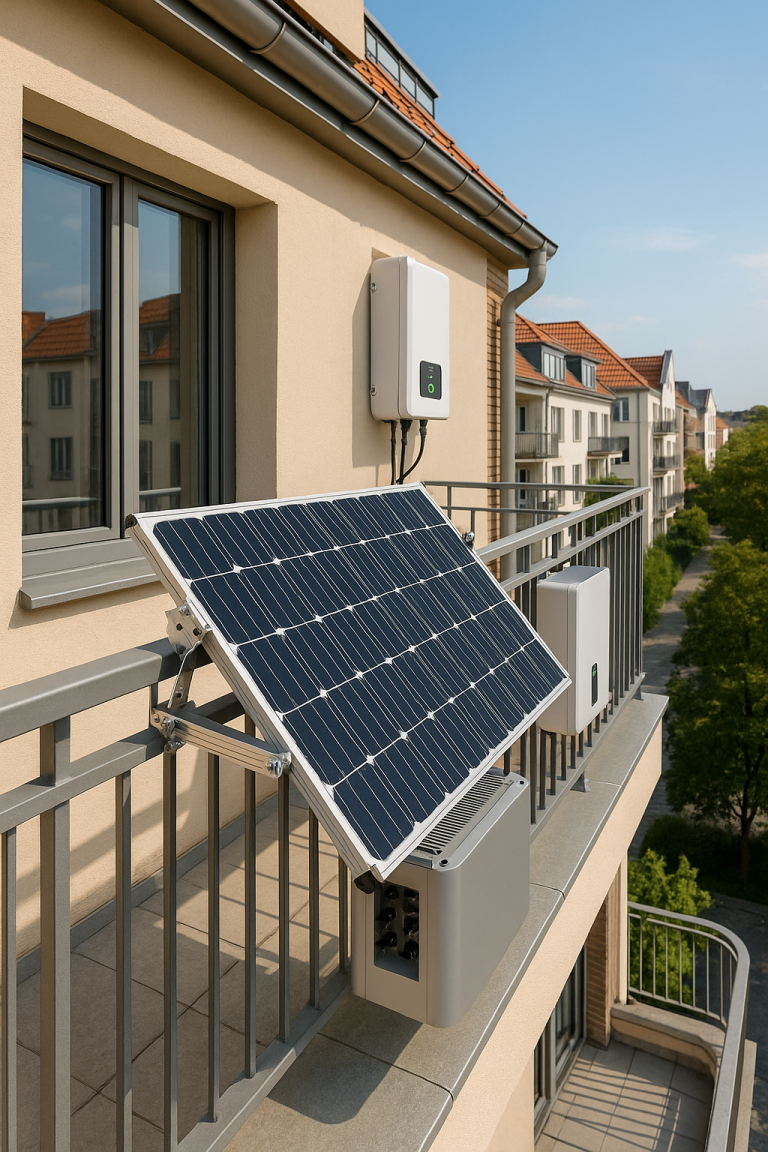1. Introduction
As more homeowners across Europe turn to solar energy to reduce electricity bills and increase energy independence, one of the most common questions they face is: “How big should my solar battery be?”
Choosing the right battery capacity isn’t just about picking a number — it’s about understanding your household’s energy consumption, solar generation potential, lifestyle habits, and backup power needs. Among the most popular options for residential setups are 5kWh and 10kWh battery systems. But which one is right for you?
In this guide, we’ll break down the differences between 5kWh and 10kWh batteries, explore the real impact of capacity on performance and savings, and walk you through key decision factors — from budget and backup hours to home size and energy use.
Whether you’re planning a plug-and-play system for a city apartment or a full off-grid setup in the countryside, this article will help you find your perfect fit.
2. What Is Battery Capacity and Why It Matters
Before comparing 5kWh and 10kWh systems, it’s important to understand what “kWh” actually means.
kWh, or kilowatt-hour, is a measure of energy storage — it tells you how much electricity a battery can deliver over time. For example:
- A 5kWh battery can theoretically power a 1kW device for 5 hours.
- A 10kWh battery could power the same device for 10 hours.
But it’s not just about numbers. In solar applications, battery capacity affects:
- How much excess solar power you can store during the day
- How long you can run your home at night or during outages
- How well your system handles peak load times
- Whether you need additional grid power during low-sun days
Battery capacity also impacts your autonomy — the more kWh you have, the more self-sufficient your system becomes.
3. Overview of 5kWh Solar Battery Systems
A 5kWh battery system is a popular entry-level solution for small to medium-sized homes or apartments with modest energy needs. It strikes a balance between affordability, energy independence, and ease of installation.
Typical Use Cases:
- Small families (1–3 people)
- Urban homes or flats with limited space
- Households that mainly use power in the evenings
- Backup power for essential loads (e.g., lights, fridge, WiFi)
Average Coverage:
- Can support 4–8 hours of nighttime usage for essentials
- Pairs well with 2–4kW rooftop solar arrays
- Offers daily cycling potential if solar input is sufficient
Pros:
- Lower upfront cost (affordable for most homeowners)
- Smaller footprint, easier to install indoors or in tight spaces
- Good fit for hybrid systems that still rely partially on the grid
Cons:
- May not provide full-day backup for larger loads
- Can drain quickly during cloudy days without enough solar input
In markets like Germany, the Netherlands, and Denmark, 5kWh systems are often used for balcony solar kits and small single-family homes — especially when space is limited or when homeowners are just beginning their solar journey.
4. Overview of 10kWh Solar Battery Systems
A 10kWh solar battery system is considered a mid-to-large capacity option, ideal for homeowners who seek greater energy autonomy or have higher electricity demands. It provides enough storage to power an entire household for extended periods — especially during cloudy weather or at night.
Typical Use Cases:
- Medium to large families (3–6 people)
- Homes with high appliance usage (e.g., electric heating, EV charging)
- Off-grid or grid-independent homes
- Businesses or shops with energy usage during the day and night
Average Coverage:
- Can support 8–14 hours of whole-home use, depending on load
- Works well with 5–8kW rooftop solar setups
- Capable of storing surplus solar energy during long summer days
Pros:
- Provides extended backup during blackouts or grid instability
- Suitable for running heavy loads: AC units, ovens, washing machines
- Reduces reliance on the grid even in winter or cloudy seasons
Cons:
- Higher upfront investment (€6,000–€10,000 range depending on brand)
- Larger and heavier — may require wall-mount or floor installation
- May be overkill for smaller households with light usage
In markets like France, Spain, and Italy, where energy usage tends to spike in the evenings and summer AC use is common, 10kWh batteries offer significant benefits in resilience and long-term ROI.
5. Key Differences at a Glance
Let’s summarize the main differences between 5kWh and 10kWh systems in terms of everyday function:
- ? Capacity: 5kWh stores less energy — suitable for essentials; 10kWh can power more appliances longer.
- ? Home Size: 5kWh works for small flats or 2-person homes; 10kWh suits 3–4 bedroom homes.
- ? Cost: 5kWh is more budget-friendly; 10kWh offers more power and future-proofing.
- ? Backup Time: 5kWh may give 4–8 hours; 10kWh can run critical loads 10+ hours.
- ☀️ Solar Integration: 5kWh ideal for 2–4kW systems; 10kWh pairs better with larger 5–8kW solar arrays.
These differences are not just technical — they have a direct impact on how independent, efficient, and cost-effective your solar setup will be.
6. How to Choose Based on Your Needs
Now let’s explore how to make the best choice between 5kWh and 10kWh batteries based on real-life considerations.
a. Home Size and Daily Electricity Consumption
Estimate your average daily usage:
- Small flat: 5–7kWh/day → 5kWh may suffice
- Medium home: 8–12kWh/day → 10kWh recommended
- Large villa: 12kWh+ → consider 10kWh or even stacked systems
Use smart meters or your utility bill (in kWh/month) to calculate your average daily consumption.
b. Backup Power Needs
If you’re aiming for emergency power backup, consider what appliances you need to run:
- 5kWh: Lights, WiFi router, fridge, laptop — for 5–7 hours
- 10kWh: Add induction stove, AC, washing machine, or hot water pump
In areas with frequent blackouts or unreliable grids (rural Spain, parts of Eastern Europe), a 10kWh battery may be essential.
c. Off-grid vs On-grid Setup
- Grid-connected: A 5kWh system may be enough to reduce bills and cover nighttime loads.
- Off-grid / hybrid: A 10kWh system is often necessary to ensure continuity across 24 hours.
You’ll also want to pair your battery with a suitable inverter, ideally a hybrid inverter with MPPT functionality and auto-switch to backup mode.
d. Budget and Long-Term ROI
Budget will always matter. A 5kWh LiFePO4 battery may cost around €3,000–€4,500, while 10kWh setups often exceed €6,000–€9,000.
But don’t just think about the upfront:
- 10kWh systems can yield better solar utilization → less wasted sunlight
- Over 10 years, this adds up to higher savings, especially with net metering limitations
- Battery cost per usable kWh often decreases with larger systems
If you plan to stay in your home long-term, investing in 10kWh could offer better ROI over 8–12 years.
7. Real-World Scenarios in Europe
To better understand how 5kWh vs 10kWh systems work in practice, let’s look at common user profiles from different parts of Europe.
?? Germany – Urban Balcony Solar User
System: 600W plug-and-play + 5kWh LiFePO4
Goal: Reduce electricity bill in an apartment
Result: Charges battery during the day, covers lighting, modem, and small kitchen loads at night. Perfect fit — high ROI with FiT (feed-in tariff) limitations.
?? France – Rural Family Home
System: 6kW rooftop PV + 10kWh battery
Goal: Gain energy autonomy + backup for power cuts
Result: Stores full-day energy to power entire home until sunrise. Surplus power used for EV charging. Winter performance managed via smart inverter control.
?? Spain – Off-grid Weekend Villa
System: 3kW PV + 10kWh stacked LiFePO4 batteries
Goal: Fully off-grid, seasonal use
Result: Powers fridge, water pump, lights, and entertainment devices without needing grid hookup. Winter usage supported with generator as backup.
These examples highlight that both battery sizes have valid applications — it depends entirely on how much energy you consume and what level of independence you want.
8. Charging Time and Inverter Matching
Battery size affects how quickly you can charge from your solar panels — and what inverter you need.
- 5kWh Battery
- Charges fully in ~3–4 hours with a 2kW array
- Compatible with smaller hybrid inverters (3–5kW)
- Suitable for low daily energy cycles
- 10kWh Battery
- Requires 4–6 hours of sun with 5kW array
- Needs a larger 5–8kW inverter or dual-MPPT
- Better for high-usage homes or full-day storage
Make sure your inverter is correctly sized and supports the battery chemistry (LiFePO4 preferred). Also consider MPPT controllers, battery management systems (BMS), and grid-tie compatibility in the EU market.
9. Installation Space & Safety Considerations
Space is another key factor when deciding between 5kWh and 10kWh systems.
? 5kWh System:
- Typically smaller, wall-mountable
- Ideal for tight apartments, closets, or balconies
- Safer and easier for DIY or semi-pro installs
? 10kWh System:
- Often floor-standing or modular stack
- Requires ventilated space, stable ground, or a battery cabinet
- Best installed by certified professionals
Both system types should be:
- Located away from direct sunlight & moisture
- Equipped with BMS, circuit protection, and ventilation
- Compliant with EU CE, VDE, and fire safety standards
10. Conclusion: Which One Is Right for You?
Choosing between a 5kWh and 10kWh battery system isn’t just about energy — it’s about matching technology to your real-world needs.
✅ Choose 5kWh If:
- You live in a small to medium home
- You want to reduce electricity bills, not go off-grid
- Your budget is under €5,000
- Your daily usage is under 8kWh
- You use a plug-and-play or hybrid grid setup
✅ Choose 10kWh If:
- You want full or partial off-grid capability
- You experience frequent blackouts
- You have large solar generation (5kW+)
- Your daily usage exceeds 10kWh
- You need backup for heavy appliances or EVs
In short:
5kWh is about practicality and payback.
10kWh is about freedom and future-proofing.




